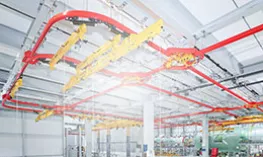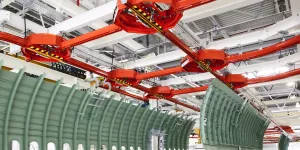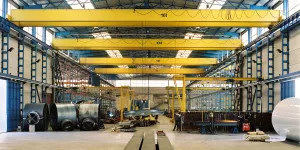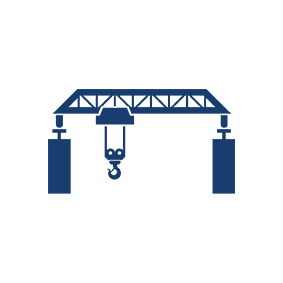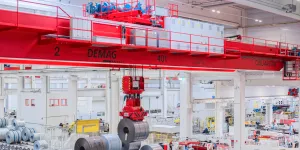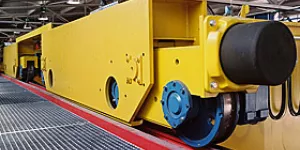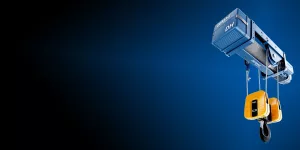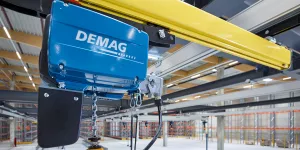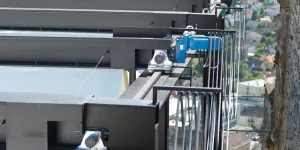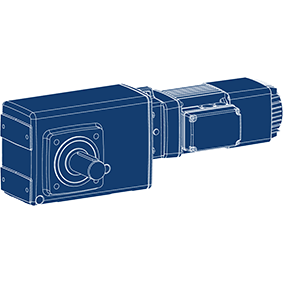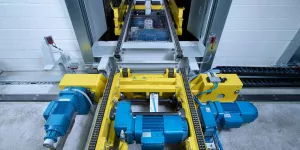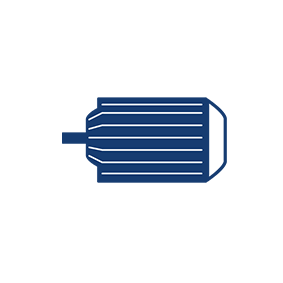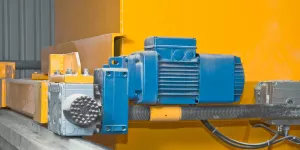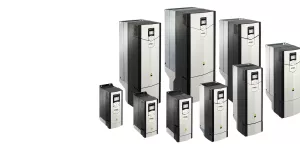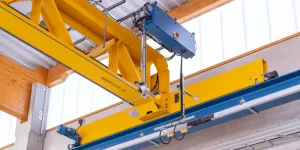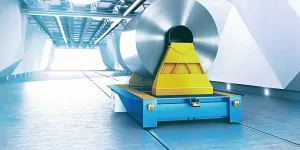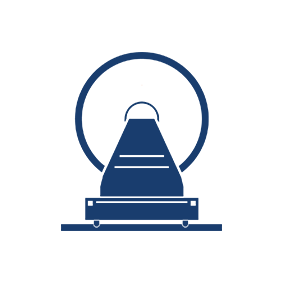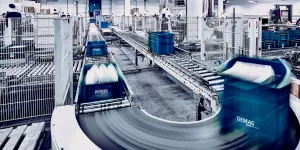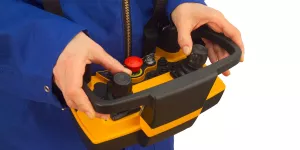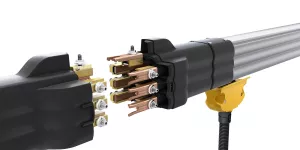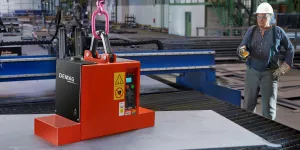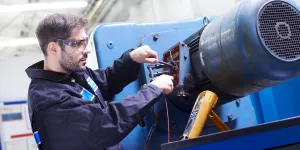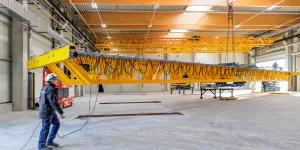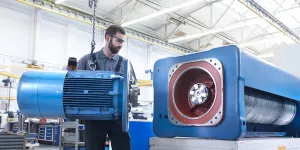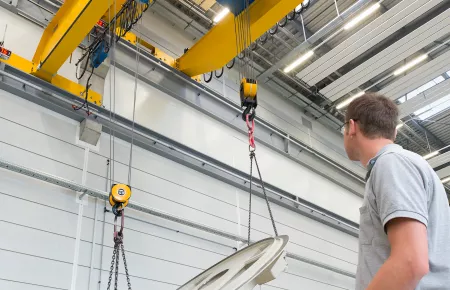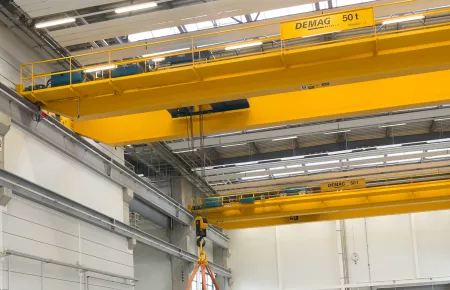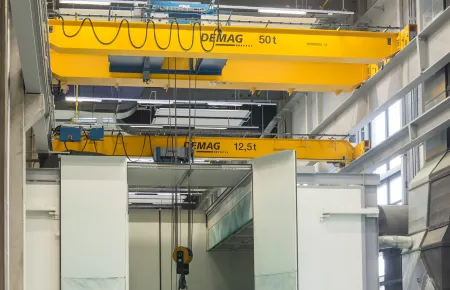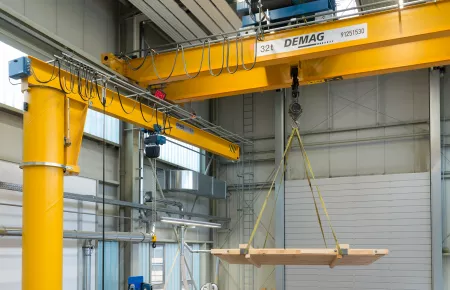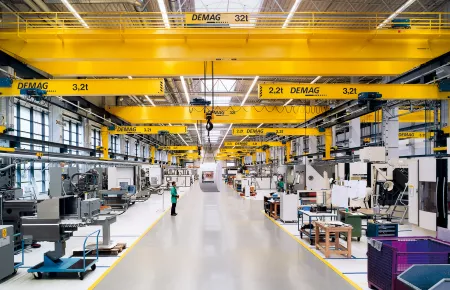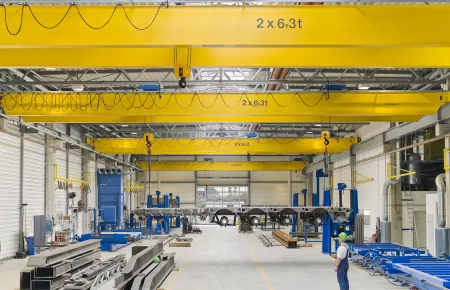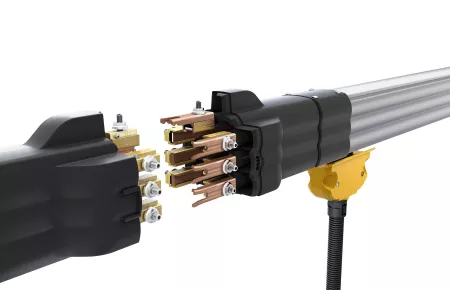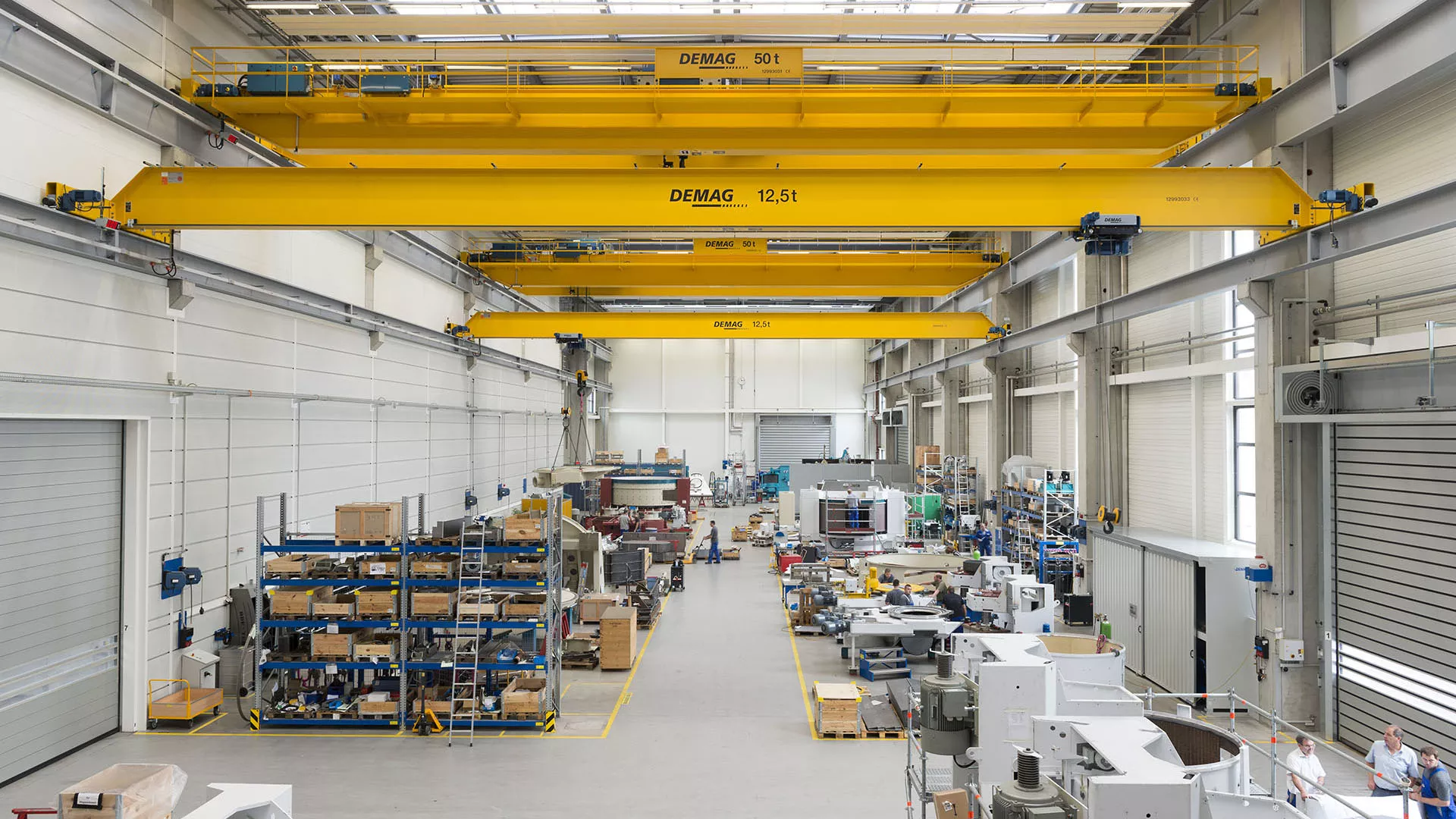
Efficient production logistics
Maschinenfabrik Eirich
Flexibility with two levels
Efficient production processes with Demag cranes
With the complete reorganisation of its production operation, the mechanical engineering company Maschinenfabrik Gustav Eirich GmbH & Co KG has implemented the largest project ever undertaken in the company’s history. Besides its investment in machinery and logistics, the production processes were completely restructured. The installation of new crane systems represented a major share in the successful implementation of this complex plan. In its 150th anniversary year, the company benefits from flexible manufacturing structures with highly efficient intralogistics.
The project
Master plan with focus on efficiency
Following continuous growth in various sectors, the production capacities at the company’s headquarters in Hardheim (Neckar-Odenwald district, Germany) had been exploited to the full. There was a great need to adapt the production areas and processes to the given requirements. For this reason, a master plan was developed which, from the very start, focussed on three working areas:
- Painting facilities
- Cranes
- Logistics and production processes
The development of mixers for increasingly complex applications also saw an increase in their overall weight. Consequently, the previously installed cranes, which had a maximum load capacity of 32 t, were no longer able to move the fully assembled large mixers as complete units, since they weigh up to 46 t. Large machine types had to be driven out as semi-completed units and then finally assembled outside the building and loaded with the help of a mobile crane. This arrangement tied down capacities in the production organisation and also involved always very high rental costs.
Cranes perform central transport functions
This resulted in the construction of a state-of-the-art production building measuring 105 m in length. While the machines are finally assembled in the wider factory bay, the state-of-the-art painting facilities were installed parallel to it.
The central intralogistics functions in this new building are performed by seven Demag crane installations. The Universal cranes, which are based on standardised crane components, were precisely designed to meet the specifications laid down by the EIRICH mechanical engineering company. Uwe Greissing, Factory Manager at EIRICH and responsible for implementation of the new production strategy, states: "We were able to draw on a wealth of experience when it came to defining the requirements for the crane installations. This was also due to the fact that we involved our staff from the very beginning, since they know exactly what details really matter in the day-to-day operations performed by these crane installations."
The current maximum weight of an EIRICH machine was used as the basis to calculate the maximum load capacity of the cranes if the machines are to be moved by just one crane. Two ZKKE double-girder overhead travelling cranes, which each have a load capacity of 50 t and a span of 22.22 m, operate on a crane runway at a height of 12.5 m. EIRICH is already prepared to meet the challenges of the future with these cranes. The ZKKE cranes are designed for tandem operation, which enables a load weighing double the maximum load capacity to be transported. To ensure that the heavy machinery can be carefully moved and positioned, the DR 20 hoist units feature two-stage operation; assembly operations can be performed at a sensitive microspeed of 0.3 m/min.
Efficient processes thanks to second crane level
The intralogistics concept includes further cranes which are used both for final assembly as well as for supplying sub-assemblies and electric motors to the individual assembly stations. For this reason, a second crane level featuring two 12.5 t EKKE single-girder overhead travelling cranes was installed at a height of 9.60 m.
Factory Manager Uwe Greissing comments: "This concept with the second level fulfils our requirement to be able to control every crane in the assembly bay independently of the others. For this reason, too, we equipped the cranes with radio controls to ensure that the cranes travel over the two levels without any problems. The current generation of hand-held transmitters are easier and more convenient for the operator to use. This also had a positive effect on our decision in favour of radio control."
Monitoring devices on the 50 t cranes on the upper level also help to improve operating safety. The position of the load hook is monitored: an optical signal indicates when the upper hook position has been reached and gives the crane operator the go-ahead to allow the cranes operating on the level below to travel past.
Safely turning components
The interplay between the crane installations was also an important requirement for the mechanical engineering company. The solution is designed to enable large parts to be moved and turned with the help of the crane equipment. For this purpose, the crane installations on the two levels move close together to achieve the minimum possible distance between the hooks.
In addition to the technical specifications, the way in which the cranes work together was improved by enhancing their geometries and the best possible approach dimensions were achieved, enabling EIRICH to benefit from the maximum working area that can be served by the cranes.
Compact dimensions save resources
A further requirement was also fulfilled: both double-girder overhead travelling cranes can be moved to within a specified minimum distance of each other on one crane runway to enable machinery weighing more than 50 t to be loaded on trucks within the vehicle travel zone. A further criterion was also decisive for the ultimate height of the assembly bay. EIRICH is preparing for machinery and plant components to be loaded direct in 40-foot sea containers for shipping. The cranes are responsible for lifting the containers onto trucks. Thanks to the standard compact designs of Demag cranes and hoist units, EIRICH was able to keep the new bay down to a low overall height, which made it possible to reduce the investment volume even further and to cut heating energy costs in the long term.“
High-performance cranes for the paint shop
EIRICH installed the entire painting facilities with two combined painting and drying booths in the parallel bay. The concept with two crane levels was employed here, too. Two 50 t ZKKE cranes with a span of 9.85 m operate on the upper runway, a 12.5 t single-girder overhead travelling crane on the level below is used for handling the parts to be painted. As in the assembly bay, the cranes that operate above the painting stations are equipped with frequency inverters for smooth starting with the valuable machinery and variable travel speeds in the cross-travel direction. All cranes at EIRICH are equipped with active load detection. The attached weight is indicated to the operator both via a large display on the crane as well as on the high-visibility display on the radio control unit. Power supply to the crane installations is provided by the Demag DCL compact conductor line.
Factory Manager Uwe Greissing comments: "Our concept has enabled us to turn the paint shop, which had always been a bottleneck in the company, into a highly efficient system. This is mainly due to the crane installations that operate on two levels and which can be used to serve the painting facilities, which are arranged one after the other, independently of each other."
Project successfully completed
EIRICH is highly satisfied with the course of the project. Uwe Greissing draws a positive conclusion: "As a mechanical engineering company, we need reliable partners who provide us with advice throughout all phases and help us to select the appropriate technology. Besides the comprehensive Demag product range, the supplier’s expert consulting services were also a reason why this project was awarded to Terex Material Handling.
The success of this partnership is also demonstrated by the fact that our processes function flawlessly with the support of the crane equipment and, even after several months of continuous operation, we see no need to add anything or request any additional features."
About Maschinenfabrik EIRICH
Machines supplied by EIRICH are often involved in the production of countless objects that you can see every day. The uniform colours used in concrete paving stones, the exact shape of car radiator systems and the consistently high production quality of glass used in optical applications all have one thing in common: the raw materials and additives used in their production were previously blended according to exact specifications by machinery and equipment supplied by EIRICH.
The EIRICH Group has specialised in industrial processing systems for decades. The company supplies a wide range of products from single machines to turn-key industrial processing facilities. Besides mixers that have capacities from 1 l to 12,000 l, it also manufactures machinery for granulating, drying and fine-grinding applications. The family-managed EIRICH Group currently employs 1,500 members of staff in eleven countries on 5 continents.

